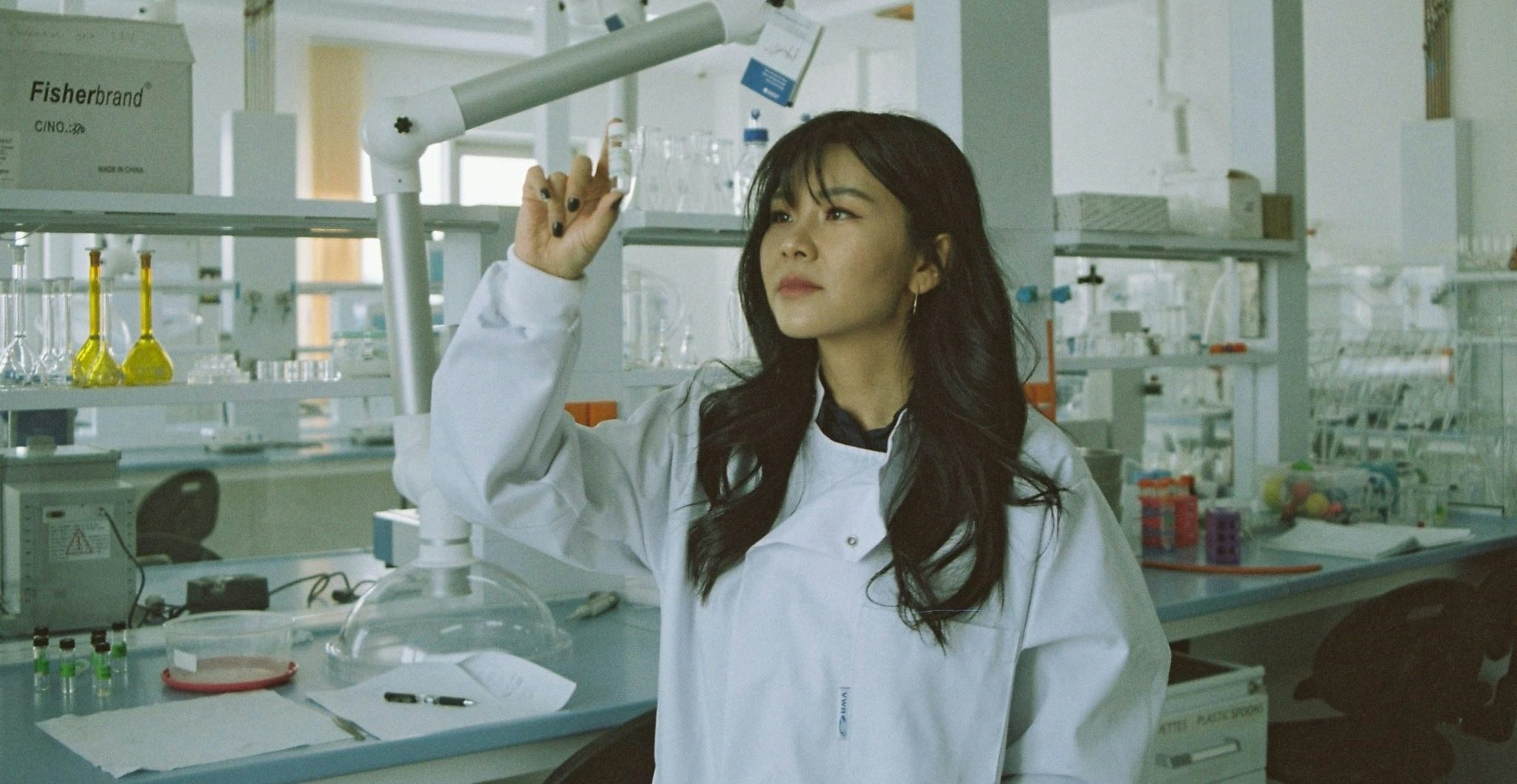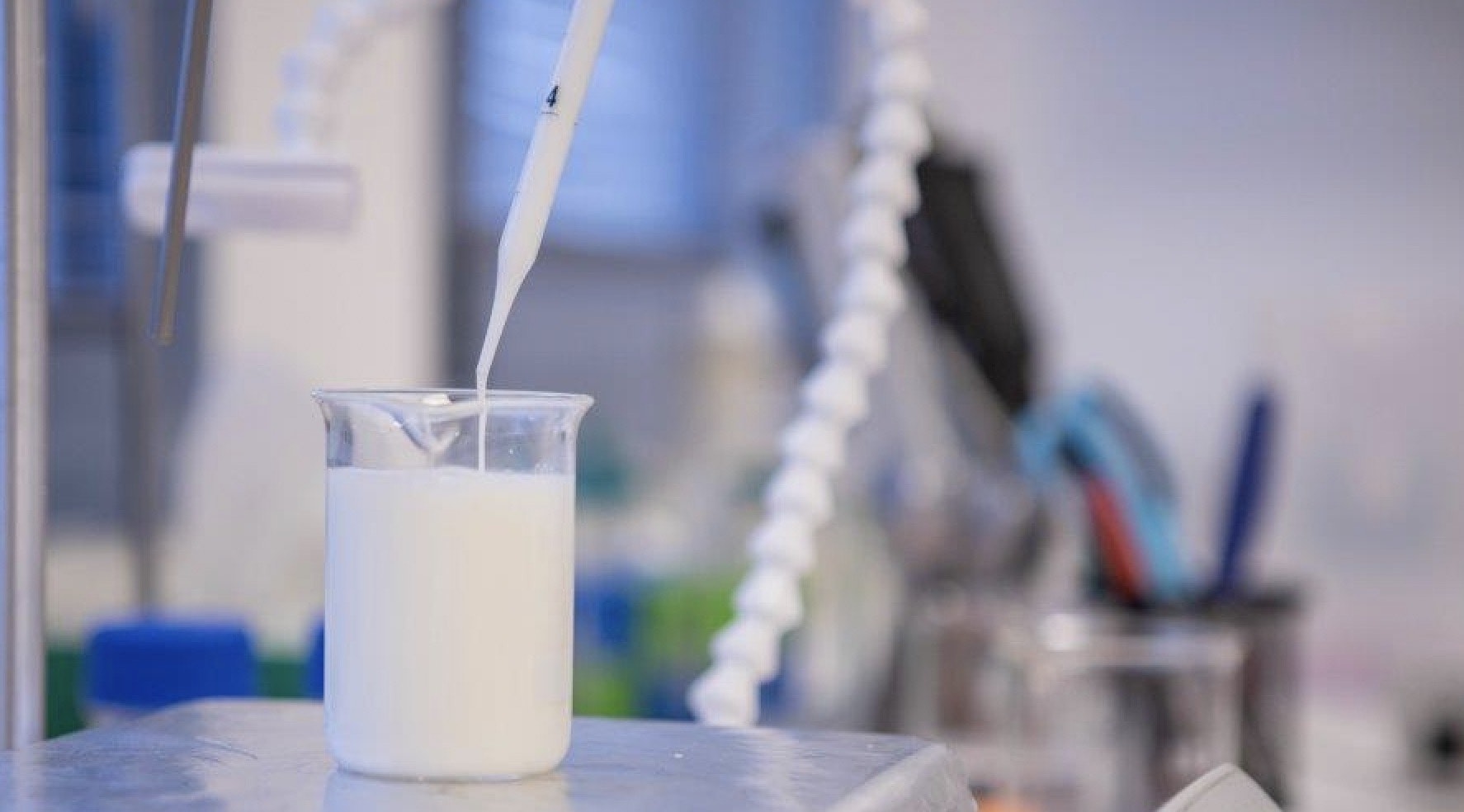Imagine sitting down to a hearty breakfast — eggs, bacon, coffee and maybe even some yoghurt. And then imagine this: all of it has been grown in a lab, with no chicken, pigs, cows or even coffee plants involved.
Gastronomic dystopia? Animal rights win? Whatever your view, the lab-grown breakfast is not a distant scenario anymore. It’s technically possible to create the full spread in a lab right now — and some of them will be heading towards the supermarket shelves soon too.
First to hit your plate will probably be the yoghurt and eggs — and there is a good chance they'll be cost competitive with their “real” equivalents. The others might take a bit longer: lab-grown coffee is little more than a science project at the moment, while lab-grown bacon is still hard to produce at a price that would be palatable to consumers.
But who are the startups concocting these culinary marvels? How tricky are they to make, how much do they cost and — the big one — how do they taste?
Lab-grown dairy
There are plenty of plant-based alternatives to dairy, but as you’ll know if you’ve ever sampled any of them, it's been hard to recreate the taste of real milk and yoghurt.
But now startups like Israel’s Remilk are changing that. Remilk, founded in 2019, is producing the key functional ingredients of milk using a yeast-based fermentation process. Yeast normally produces ethanol and carbon dioxide during fermentation — qualities used by bakers and brewers for millennia — but it can be modified to produce the components of milk instead.
“Essentially what we've been doing, from very early on, is mapping out the different ingredients of milk and finding out what makes milk milk and what makes cheese cheese,” says Remilk’s cofounder and CEO Aviv Wolff.
According to him, milk is full of hundreds of different compounds, but most of them are not required to make cheese or yoghurt. Remilk has isolated the necessary compounds and engineered yeast to produce them.
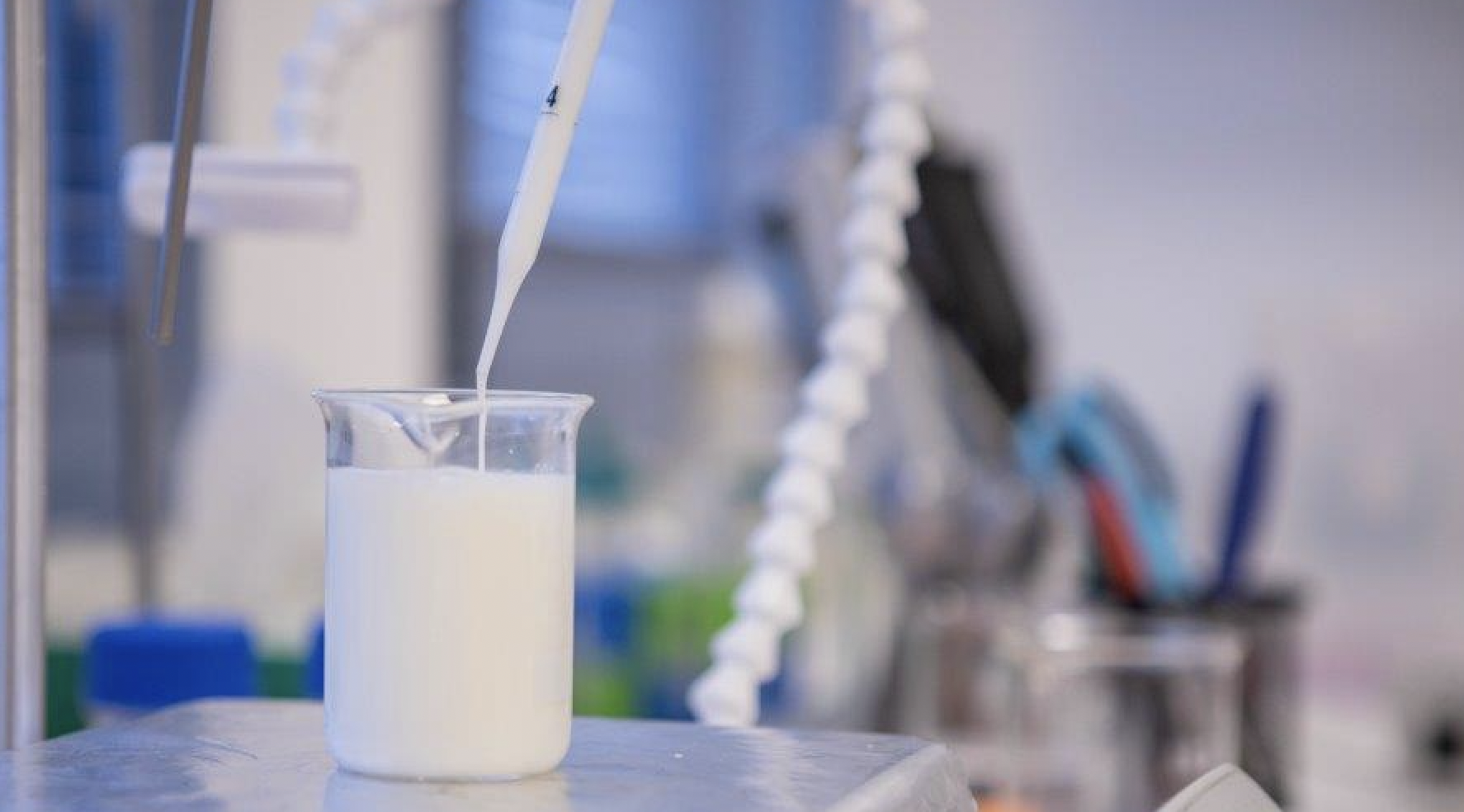
Is it “Frankenstein stuff”?
Tom Dunne, vice-president of European Dairy Farmers, is not a believer in cow-free milk. He commented in the Guardian that lab-grown dairy was “Frankenstein stuff” and “will always be missing something”.
Wolff, who says dairy producers have shown a lot of interest in Remilk’s products, disagrees.
“Because our functional ingredients are 100% identical to the animal we're going to end up with dairy products that are indistinguishable from their base counterparts [on] taste and texture,” Wolff says. “From a sensory perspective, you cannot tell the difference.”
Nutritionally these products could even be considered superior, he adds, because they’re free from lactose and cholesterol.
Remilk was founded just three years ago but has already raised $140m from a range of investors.
Remilk plans to use its latest round, raised in January, to scale up its commercial production. It is already using a few production facilities around the world. According to Wolff, it is also in the final stage of product development and hopes to have some of its products ready for the market later this year.
How much will it cost?
Product number one is unlikely to be milk. Milk production is subsidised in many parts of the world, making it tricky to compete with “traditional” suppliers on price.
“Liquid milk tells the story perfectly for us. However, it's still not a perfect match from a unit economic perspective. But we’re definitely aiming to enter this category eventually,” Wolff says.
Until then, Remilk will be focusing on categories like yoghurt, ice cream and cream cheese where it will be easier to reach price parity with cow-made dairy, even if that means low margins.
“In order to really [start] revolution we need to be delicious and we need to be affordable so the pricing is crucial,” Wolff adds.
“Our long-term vision is that we want to be cheaper than traditional products. What we are trying to do is to eliminate the economic incentive from using cows in our food system.”
What are the challenges?
Wolff is not worried by regulation and consumer resistance — those challenges can easily be overcome, he says. He thinks the biggest challenge for Remilk is scaling up production in a field where traditional dairy producers have had hundreds of years to define the process.
“Precision fermentation is based on low-volume, extremely high-value products. We need to build production facilities and ally with new [commercial] partners to scale. This is the biggest challenge because we see the demand but even in five years' time, we will not have enough capacity.”
How many others are doing the same?
Remilk is not alone in the cow-free dairy space. There’s also US-based Perfect Day, which is producing animal-free dairy, and Israeli startup Imagindairy, which is set to have its cow-free milk on the shelf by next year. However, Wolff believes Remilk is in a strong position to make a dent in the market.
“Remilk is probably the most advanced company in the world, [in terms of] our ability to produce on a commercial level and the quality and the pricing of the product.”
Lab barista: the taste needs work
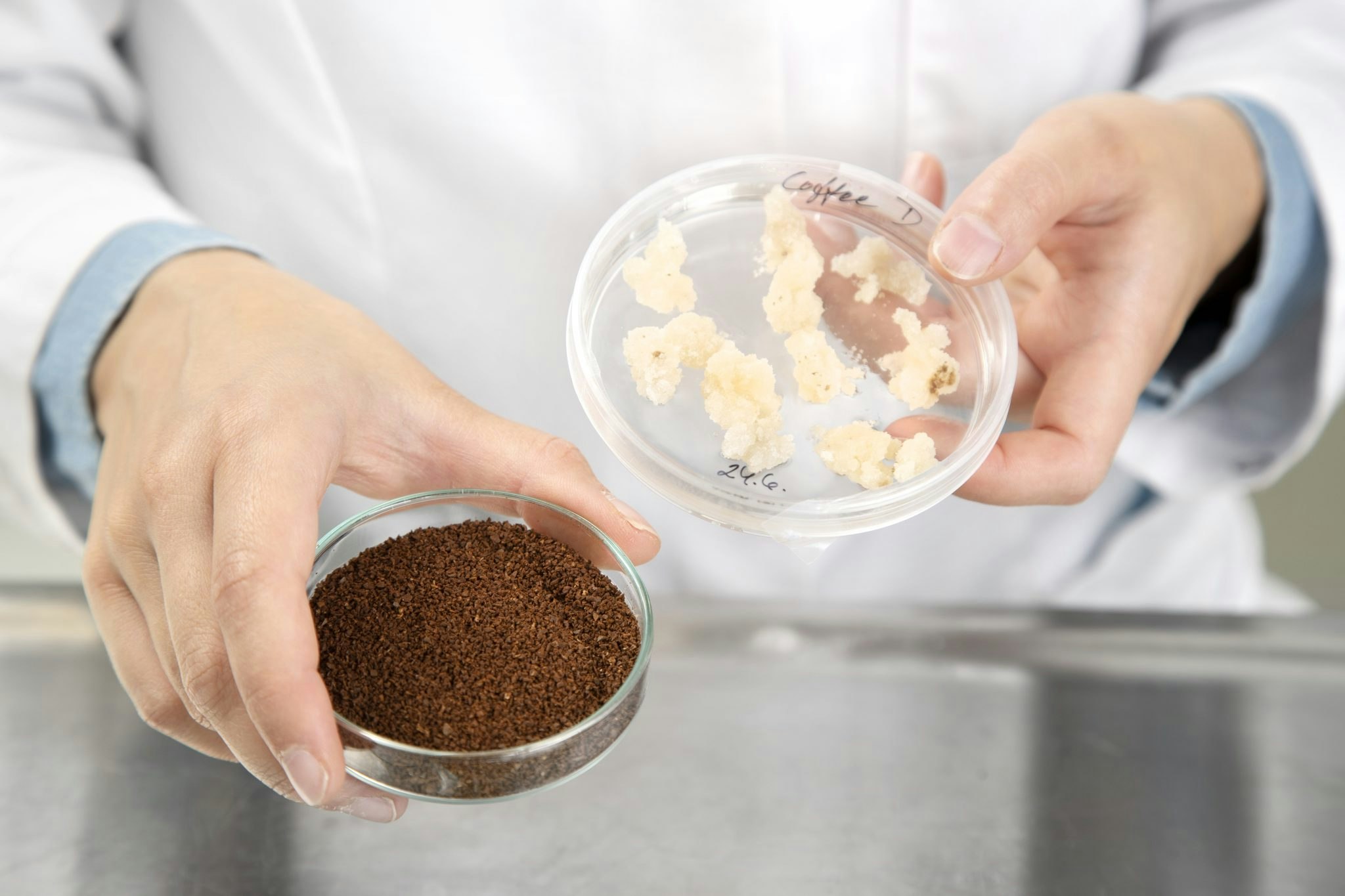
Coffee has become a lot more expensive lately. Last year it saw the largest price rise of any commodity and in December, coffee prices rose to a decade high, breaking through the $2 per pound level. According to Rabobank analysis, this was fuelled by a lack of available shipping containers, a spike in demand and dry weather.
So, what if there was a way to make coffee without the constraints of weather and shipping?
That's what Heiko Risher, a researcher at the VTT Technical Research Centre in Finland, wanted to find out when he embarked on a research project two years ago. Given that Finland has the highest per-capita coffee consumption in the world, it is perhaps not surprising that the coffee research started there.
Risher and his team set out to show that you could create a plant-derived ingredient like coffee using fermentation.
They added coffee cells to a bioreactor — a closed steel vessel — and mixed them with a salt solution, some sugar and growth regulators as well as some energy, and produced a cell biomass of coffee.
Simple to make, hard to make tasty
Creating coffee in a fermentation tank is simpler than making animal proteins.
“If you compare it to an animal cell culture medium, it's very complex and has many difficult components in their organic components. So our medium [coffee] is relatively simple and therefore also cheaper and easy to scale,” says Risher.
The cell biomass of coffee developed in the vessel has the consistency of a smoothie and is then dried, similarly to green beans of “real” coffee. When dried it needs to be roasted, just like normal coffee.
“It’s an art to do good roasting. We didn't do that. We just simply oven roasted the material and what we get is a kind of brown powder, similar to coffee powder. We can put this powder directly in a filter and then we can brew a coffee in an ordinary way,” says Risher.
He’s no barista, he makes clear: “This is not a product — this is a proof of concept exercise.” However, experts compared the lab-grown coffee to real coffee in terms of is chemical makeup and the sensory experience. And the result?
Risher doesn’t say so directly, but reading between the lines it didn’t taste great.
“What we can say is that this is a coffee and it definitely has the potential after optimisation. It’s something a product developer needs to do — a coffee expert is needed here,” Risher says.
Will it give you a caffeine buzz?
“There’s caffeine in there, so that's good news,” he says. “It's rather on the lower end compared with regular coffee, but for us, it means that the synthetic pathway is generally active and we can affect it to have more or less [caffeine].”
The VTT is in talks with a wide range of companies, both startups and multinationals, that have shown an interest in the lab-grown coffee.
“There are huge sums of capital now available in this whole area so money doesn't seem to be the big problem and technical things can be solved. The main challenge will be to find the commercial players with the willingness and vision to set this up,” Risher says.
With approval needed from regulators like the EFSA in the EU and FDA in the US, it would probably take at least four years for the “novel food” of lab-grown coffee to land on supermarket shelves — and that’s only if an external company comes in to help take it to market.
“You need a party or several parties with the vision and the real willingness and also the financial resources to drive this direction,” Risher says.
Lab-grown eggs: could be on sale by 2024
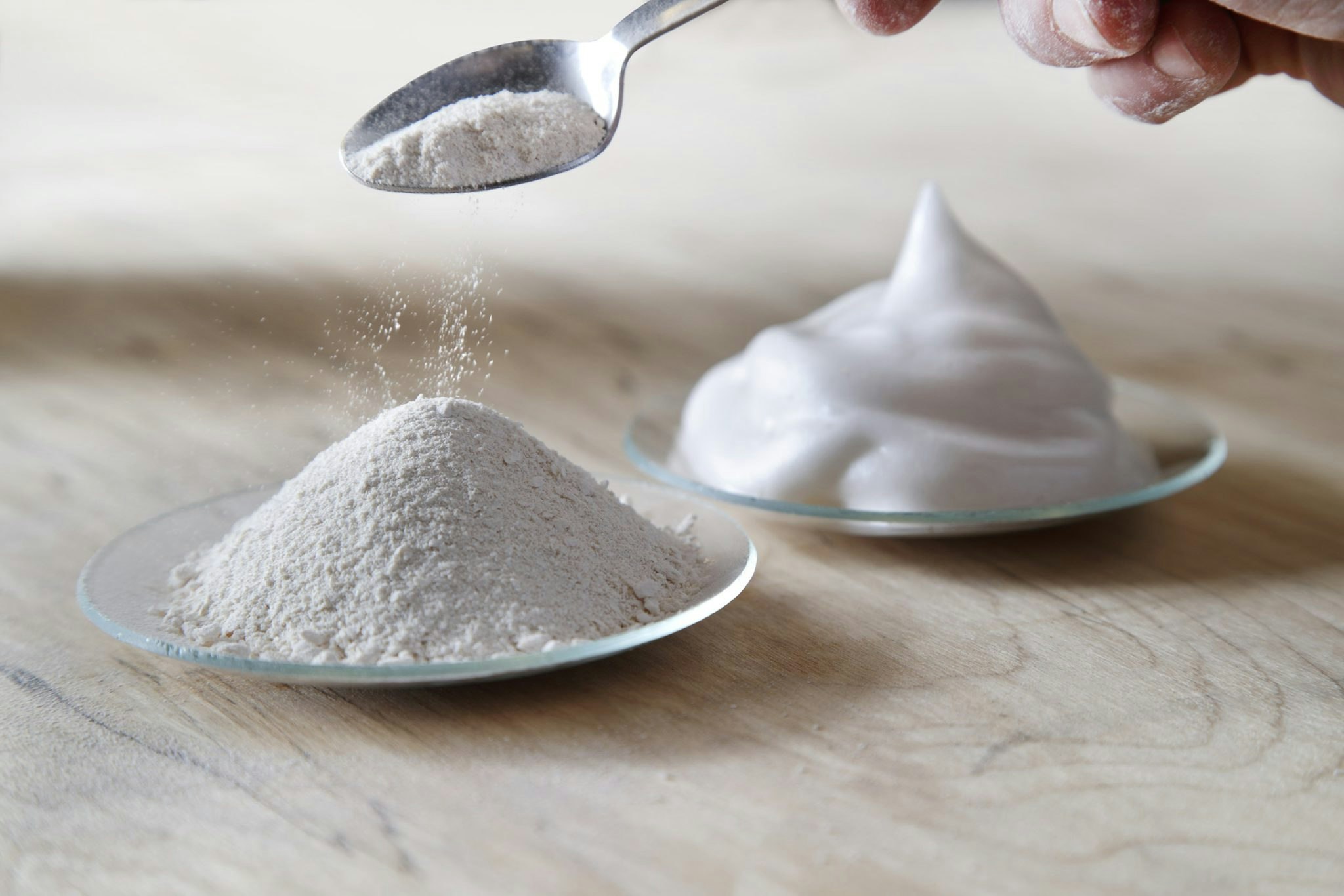
Fermentation is also the key to Finnish startup Onego Bio’s lab-grown egg whites.
The process involves introducing the genetic code of an actual egg white into a host organism using fungal technology. The host will then produce the egg white protein in large amounts. Later, the host cells are separated and filtered out from the egg white cells. After drying, a bioalbumen powder is left that then turns into egg white, as we know it, when mixed with water.
“This is not a substitute [for eggs]. This is not an alternative. This is the real egg white and we are just processing it differently,” Maija Itkonen, the CEO of Onego Bio told Sifted when the startup announced its €10m seed round back in February.
Challenges ahead
Onego Bio has ambitious plans to get its product through the FDA approval system in the US in 2023. It expects it will take about a year longer to get it approved in the EU. But regulation is just one of the challenges, according to Itkonen; the technology also needs to be fine-tuned to make it as productive as possible (to bring down the cost) which will take time and money.
Once it’s on the shelves, Itkonen is hoping to sell the egg white for about the same price as organic eggs — a couple of euros for the equivalent of three or four eggs.
The real cost for production is not pinned down, however, and prices may be higher until Onego Bio manages to scale.
The biggest challenge of all will be making sure the consumers will be happy to stop cracking eggs and use powder instead.
“The consumer perception will make this whole business win or lose, and therefore we are putting very high focus on that,” Itkonen says.
Bacon: still too expensive to bring home
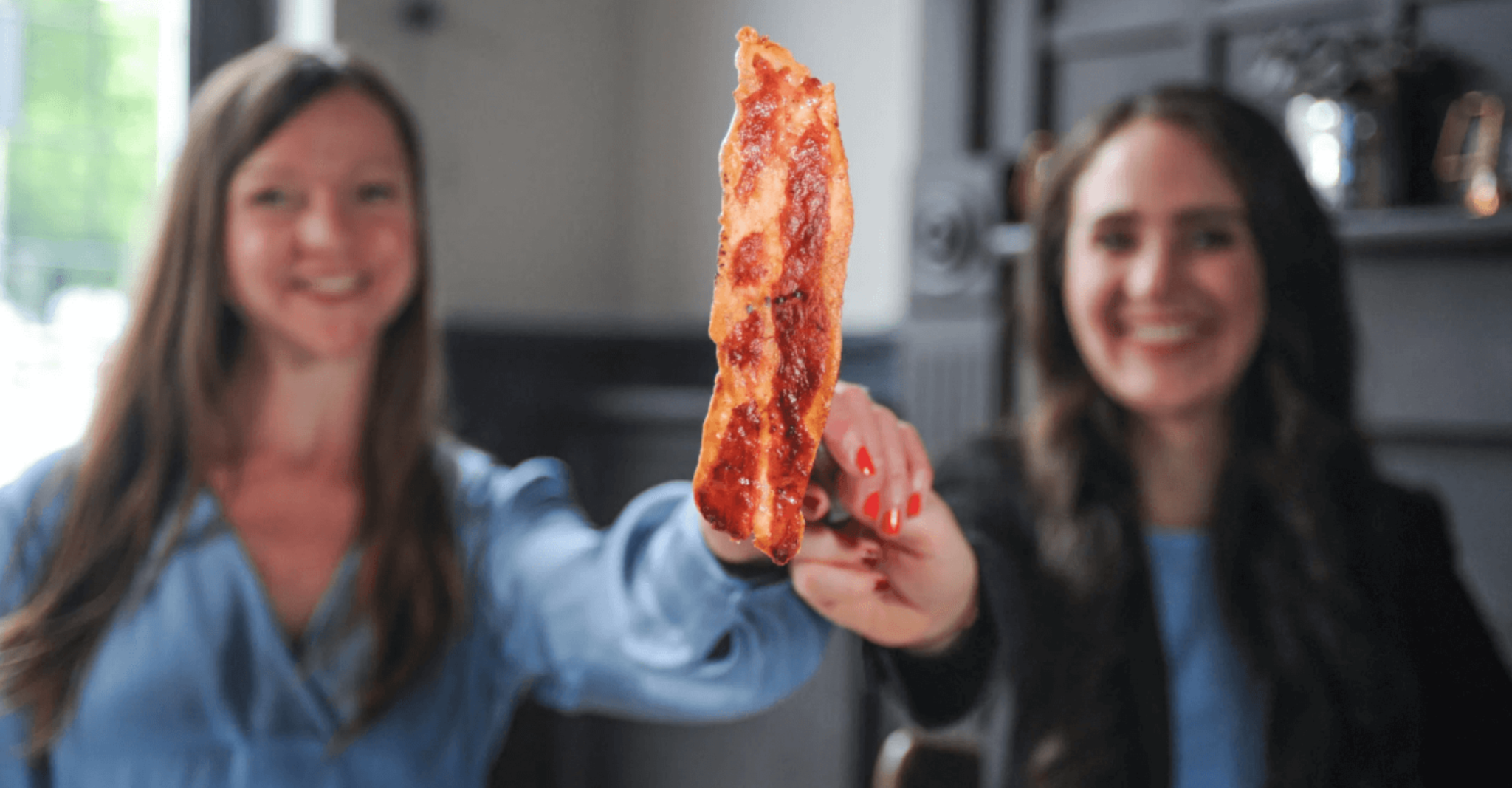
A rasher of bacon is one of the more complicated parts of the lab-grown breakfast to create, but this is becoming a reality now at Higher Steaks, a Cambridge-based startup. Higher Steaks created the first prototype piece of lab-cultivated bacon back in 2020 and has been working to finesse the process since then.
The bacon — which even looks like an authentic rasher, with a streak of fat running through the middle — is made with a mixture of cultivated cells taken from a live pig and plant-based material. It is about 70% pork cells and 30% plant material. The Higher Steaks team is still trying to tweak the composition to get it closer to the taste of natural bacon.
“With bacon the taste is complex,” says Benjamina Bollag, founder and CEO of Higher Steaks.
What will it cost?
The bacon cells are cultivated in-vitro, and this process is still too expensive to be competitive with real bacon, Bollag says.
There is considerable controversy over whether lab-grown meat can ever be commercially viable. The Good Food Institute, a non-profit company that represents the alternative protein industry, published a study in 2020 that showed that the $10k per pound price of lab-grown meat could come down to $2.50 per pound by 2030. But other studies have concluded that, given the costs of growing the animal cells (they need to be carefully fostered in a nutrient-rich liquid similar to human blood) and the complexity of the bioreactors and equipment needed, it's unlikely that costs will ever come down to a level competitive with real meat.
On the other hand, Californian startup Eat Just does seem to have got the cost of its lab-grown chicken nuggets down to a palatable level. They're sold in restaurants in Singapore for $17 a meal — so if you would like a nugget with your breakfast, that at least is a possibility.
Could the same be done with bacon? Possibly, although producing something that has the fat streaks and muscle texture of bacon is even harder than making a mush of meat cells that can be turned into a nugget or a burger.
When is it coming to your plate?
The Higher Steaks team has spent the last 18 months trying to bring the cost down, but the bacon still cannot be produced at the price they want. The company is arranging taste-test sessions for potential investors, but there is no estimate yet for when the bacon would actually cost on the market.
A further hurdle will be getting the bacon approved by food standards regulators, a process that is likely to take around a year, Bollag estimates.
Breakfast of the future
It will be a few years before the full animal-free “English” breakfast is on your plate, but food created by fermentation rather than farming is definitely coming.
Milk and egg whites are likely to be the first to prove the market, but the variety of other precision-fermented foodstuffs is growing. Yeast and bacteria may end up taking over from chickens, pigs and cows as the workhorses of food production.
The big question is whether these will take off with the general public. Past public backlashes against genetically modified foods have shown how carefully new foods need to be presented to consumers. All the startups working in this sector are thinking carefully about their positioning messages.
But with a growing need to make food production less resource-intensive, this route to more sustainable agriculture is worth exploring. It is unlikely to seize the whole market for animal made foods, but it can perhaps make a dent in a space that seriously needs innovative solutions.
Maija Palmer is Sifted’s innovation editor. She covers deeptech and corporate innovation, and tweets from @maijapalmer. Mimi Billing is Sifted’s Nordic correspondent. She tweets from @MimiBilling

